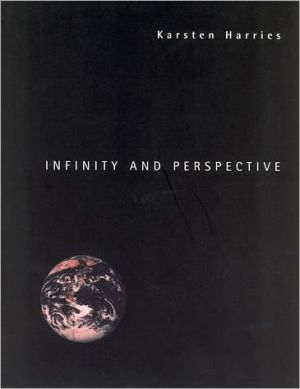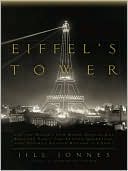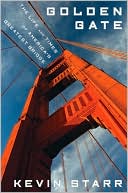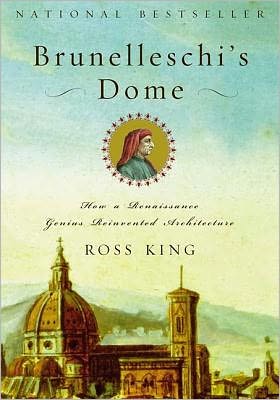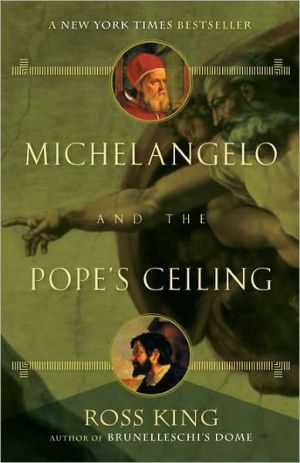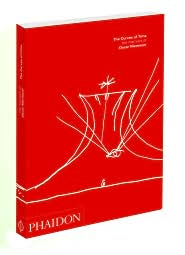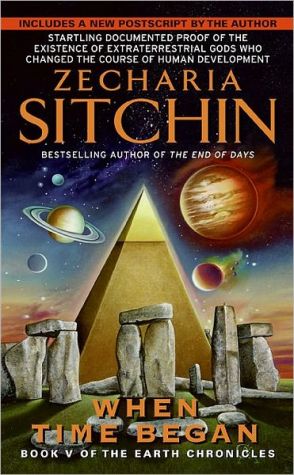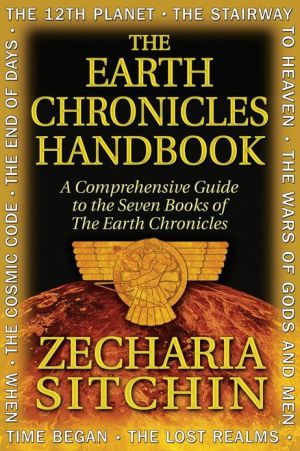Infinity and Perspective
Much postmodern rhetoric, suggests Karsten Harries, can be understood as a symptom of our civilization's discontent, born of regret that we are no longer able to experience our world as a cosmos that assigns us our place. But dissatisfaction with the modern world may also spring from a conviction that modernism has failed to confront the challenge of an inevitably open future. Such conviction has frequently led to a critique of modernity's founding heroes. Challenging that critique, Harries...
Search in google:
A philosophical exploration of the origin and limits of the modern world.Publishers WeeklyPostmodern philosophy rests its assumptions on perspectivism, a view supported by various readings of Nietzsche, who argued against the existence of absolute, objective Truth (i.e., the infinite or God) and in favor of relative, subjective truths (i.e., perspective). Indeed, long before Nietzsche, Copernicus and others challenged the medieval theocentric view of the world and established a modern anthropocentric view, initiating a revolution that proffered epistemological relativism as a method of reading the world and God. Yet, as Harries, professor of philosophy at Yale, observes, both moderns and postmoderns engage in a quest for knowledge and truth: "Truth requires objectivity; objectivity requires freedom from particular points of view. Reality discloses itself to us only in the spirit's more objective reconstructions of what the senses present to us." Harries's wide-ranging intellectual history pursues this thesis through close readings of medieval philosopher Nicolaus Cusanus, the Renaissance architect Alberti, Copernicus, Aristotle, Descartes, Galileo and modern philosopher of science Hans Blumenberg. He concludes that the greatest desire of human nature is to know and that people's "own nature calls them again and again beyond the points of view and perspectives assigned to them by their place in the world." Harries's demanding exploration of the study of knowledge offers an affirmation of human freedom and a rejection of nihilism that truth has no meaning because there are so many meanings of truth. Given this perspective, Harries's well-positioned and clearly presented history of ideas will generate a great deal of controversy among a select audience of scholars. Color and b&w illus. not seen by PW. (May) Copyright 2001 Cahners Business Information.
\ \ Chapter One \ \ \ Introduction: The Problem of the Modern\ \ \ 1\ Number mysticism has never managed to capture my imagination. My greatest concern, as we approached the year 2000, was that instead of crossing that much-discussed bridge into the third millennium with open eyes, I would be unable to stay awake until midnight. With all the excitement around me, I felt just a bit ashamed that I might be carried across that bridge asleep. But without giving undue weight to three zeros, are we not caught up today in a process that promises or threatens to transform our cultural landscape? And if so, should we not try to assume at least some responsibility for where we are heading, instead of allowing ourselves to just drift along?\ That we are indeed crossing some important cultural threshold is hinted at by the terms "postmodern" and "postmodernism." What is postmodern would seem to follow what is modern, to have taken a step beyond it, leaving it behind. But any suggestion that we take such a step has to raise questions: for what do we mean by "modern"? Do we not call "modern" what is of today and up-to-date, as opposed to what is of yesterday and old-fashioned? "Modernism" thus suggests something like an ideology that embraces what is taken to be the spirit presiding over our world, over its progress, however spirit and progress are understood. "Postmodernism" then presumably means the opposite: an ideology born of dissatisfaction with that spirit, which would have us embrace what is other than modernity.\ Likemillennial fervor, postmodernism invites interpretation as a symptom of our civilization's discontents, of widespread dissatisfaction with this modern world. Such dissatisfaction may look backward, to some premodern past, or forward, to some postmodern future. That is to say, dissatisfaction may lead to nostalgia—regret that modernity no longer allows human beings to experience their world as a cosmos that assigns the individual his or her place on firm ground, regret that with what Nietzsche called the death of God our spiritual world apparently lost both founder and foundation and now is developing all sorts of cracks and fissures, falling into ruin as supposedly stable supports have begun to shift. Such regret invites attempts to repair or rebuild that spiritual house, to recover in some way or other what has been lost. But dissatisfaction may also refuse nostalgia, convinced that all such attempts to recover what has been lost fail to confront the changed shape of our world, which rules out such recovery; fail to confront the challenge and promise of an inevitably open future, fail finally to recognize that the problem today is not so much a loss of home but rather the ability of our modern world, this simulacrum of a once meaningfully ordered cosmos, to place us all too well, so that what may already have become a ruin, nevertheless still functions as a prison to stifle freedom. Ruin and prison: in these metaphors postmodern suspicion of all sorts of architectures finds expression (fig. 1).\ To call something, say art or thinking, "postmodern" is then to suggest a refusal of what modernity claimed to have established and to display opposition to what now often seems the naive optimism of the Enlightenment, an optimism that has supported modernism as it has supported science, liberal democracy, and international communism. Gesturing beyond all that is merely modern, the term points to some nebulous "other," some hoped for brighter future that may already be announcing its coming, even though it has not yet arrived and its contours are impossible to read. But given what postmodern art and theorizing have produced, such an understanding may still seem much too hopeful, too close to Enlightenment optimism. Postmodernism and optimism do not rhyme very well. The horrors of the twentieth century have taught us to be suspicious of revolutionary fervor and of the conviction that drives it. Religious fundamentalism and totalitarianism are also born of dissatisfaction with the modern world, and in this sense they are also expressions of a postmodern sensibility. Small wonder then that the mood of what remains of the cultural avant-garde should have "changed from vehemence to decadence and weary cynicism.\ It would be a mistake to understand postmodernism as what temporally follows modernism. Postmodernism is a phenomenon of modernity's bad conscience; it betrays suspicion that modernity lacks legitimacy, suspicion that has shadowed the modern world from the very beginning. In the twentieth century such suspicion has grown apace, especially in the past three decades. Reinforced in this country by the profound disenchantment of the Vietnam years, which undermined America's naive self-confidence, reinforced all over the world by intractable economic and social, race- and gender-related, religious and ecological problems, the rhetoric of postmodernism communicates a growing suspicion that the road on which this logocentric, Eurocentric culture has been traveling leads to disaster. Despair and hope, the former more articulate than the latter, mingle in such self-doubt, where both tend to focus on modern science and even more on the ever-expanding technology that science has made possible.\ I suggested that we moderns no longer experience our world as a well-ordered cosmos, resembling a house that shelters and grants us place. That simile invites us to think God in the image of an architect, the architect in the image of God, and the philosopher, who with his or her thoughts attempts to reconstruct the order of the cosmos, in the image of both. The philosopher, too, is a would-be builder, someone who edifies—and that very word "edify" should make us think: a word that once meant simply to raise a dwelling or structure, that later came to mean "to improve morally or spiritually," today tends to carry primarily a negative connotation. Why such suspicion of all sorts of edification? The word's shift in meaning and connotation invites us to interrogate attacks on architecture that have recently come into fashion. Take the word "deconstruction" and all it stands for. What, for example, are we to make of Bernard Tschumi's attempt to create an architecture against architecture in the Parc de la Villette or of Derrida's collaboration in that project? Denis Hollier suggests that "Such a project calls upon a loss of meaning, to give it a dionysiac dimension: it explicitly takes issue with what Tschumi describes as an essential premise of architecture, `the idea of meaning immanent in architectural structures'; the park, a postmodern `assault on meaning,' claims as its main purpose to `dismantle meaning.'"\ But are we suffering from such a surfeit of meaning that we should thus want to dismantle it? Has meaning become the prison that denies us access to Dionysian ecstasy? How are we to understand the current vogue enjoyed by Georges Bataille's stance against architecture, where architecture stands for an order that imprisons us and should therefore be destroyed, even if such destruction threatens chaos and bestiality? (fig. 2). "It is obvious," Hollier quotes Bataille, "that monuments inspire social good behavior in societies and often even real fear. The storming of the Bastille is symbolic of this state of affairs: it is hard to explain this mass movement other than through the people's animosity (animus) against the monuments that are its real masters." But if we admit that monuments sometimes inspire good behavior, perhaps even real fear, is it also obvious that they therefore deserve to be abolished? Does this society, does the world, suffer from too much "good behavior"? Ought we to let loose the Minotaur? Such convinction betrays a deep self-hatred. As Bataille recognized, this animus against the monuments that are our real masters is inevitably also an animus against ourselves:\ \ \ And this is precisely what, in Bataille's view, the mythical figure of Acephalus was intended to show: the only way for man to escape the architectural chain gang is to escape his form, to lose his head. This self-storming of one's own form requires, in fact, an infinitely more underhanded strategy than one of simple destruction or escape. The image of Acephalus, thus, should be seen as a figure of dissemblance, the negative imago of an antimonumental madness involved in the dismemberment of "meaning." The painter André Masson drew this figure and Bataille wrote an aphorism to go with it: "Man will escape his head as a convict escapes his prison."\ \ \ Such an attack on architecture, which is also an attack on meaning, presupposes a gnostic desire to escape one's human form, this prison of the free spirit, even if the price for such liberation should be losing one's head. The reasoning that here makes the prison the paradigmatic work of architecture, a kind of lens through which to look at all architecture, is of the sort that lets Dostoevsky's man from the underground call twice-two-makes-four a piece of impudence and celebrate twice-two-makes-five as the ultimate refuge of a freedom that, resisting placement, dreams of labyrinth and chaos: has not our head become our prison? But must such a displaced freedom lose, along with body and head, in the end also itself? The problem of both modernism and postmodernism is at bottom nothing other than the problem of freedom.\ \ \ 2\ That postmodern rhetoric should so often have included critiques of the Enlightenment and of its founding heroes—such "dead white males" as Kant, Descartes, and Copernicus—is to be expected. It is their legacy, their architecture that is now called into question because what they helped build fails to answer to something we deeply desire. One aim of this book is to cast light on the problem of freedom by addressing this ambiguous failure. Not that questioning such attempts to establish the modern world as a house built by reason is a new phenomenon: Nietzsche, postmodernism's most frequently cited precursor, was in 1887 already lamenting that "Since Copernicus, man seems to have got himself on an inclined plane—now he is slipping faster and faster away from the center into—what? into nothingness? into a penetrating sense of his own nothingness?" The Greek or the medieval cosmos assigned human beings their place near the center, but the Copernican revolution would seem to have condemned us to an eccentric position. To be sure, eccentricity still presupposes a center: Copernicus (as we should expect, given his place still on the threshold separating our modern from the medieval world) was himself only a half-hearted modernist and continued to hold on to the idea of a cosmic center, as he continued to invoke the idea of a divine architect and with it the idea of a bounded, well-ordered cosmos; he only denied the earth that central place, giving it instead to the sun. But, as we shall also see, of more fundamental importance than the shift from a geocentric to a heliocentric understanding of the cosmos proved to be the authority granted to human reason, bound up with a self-elevation that frees the thinking subject from any particular place. Such self-elevation, a new freedom, and a new anthropocentrism go together with a new sense of homelessness. Nor are any of these features specifically Copernican: the foundations of the bounded, homelike cosmos of Aristotle and Ptolemy had been shaken long before it fell into ruin and was abandoned.\ Nietzsche was hardly the first one to rhetorically exploit the nihilistic implications of the post-Copernican universe. Here is the beginning of volume 2 of Schopenhauer's World as Will and Representation (1819): "In endless space countless luminous spheres, round each of which some dozen smaller illuminated ones revolve, hot at the core and covered with a hard cold crust; on this crust a mouldy film has produced living and knowing beings; this is empirical truth, the real, the world." Empirical truth, so understood—that is to say, our science—knows nothing of privileged places, of absolute values, of home. And if that truth is identified with the truth, then, if we are to escape from nihilism, shall we not have to cover up the truth or abandon it altogether? Could the insistence on the truth be an obstacle to living the good life?\ Nietzsche appropriated Schopenhauer's dismal if sublime vision in the very beginning of his youthful fragment "On Truth and Lie in an Extra-Moral Sense," so popular with postmodern critics weary of all centers, which should lead us to ask ourselves why such weariness is preferred to nostalgia. One answer is given by a continued insistence on a quite modern freedom. This free-floating freedom, however, needs to be incarnated if it is not to evaporate; and so, suspicious of all surrogates of home, postmodernists have dreamed of losing themselves in Dionysian ecstasies.\ But let me return to Nietzsche's retelling of Schopenhauer's tale: "Once upon a time, in some out of the way corner of that universe which is dispersed into numberless twinkling solar systems, there was a star upon which clever beasts invented knowing. That was the most arrogant and mendacious minute of `world history,' but nevertheless, it was only a minute. After nature had drawn a few breaths, the star cooled and congealed, and the clever beasts had to die." Nietzsche emphasizes the immense disproportion between our lifetime and the time of the world: what does this universe, which threatens to reduce the time and space allotted to us to insignificance, care for us? It is this same disproportion that Turgenev lets his nihilist Bazarov express in Fathers and Sons (1862):\ \ \ I'm thinking life is a happy thing for my parents. My father at sixty is fussing around, talking about "palliative" measures, doctoring people, playing the bountiful master with the peasants—having a festive time in fact; and my mother's happy, too. Her day is so chockful of duties of all sorts, of sighs, and groans that she does not even have time to think of herself; while I ... I think. Here I lie under the haystack. The tiny space which I occupy is so infinitely small in comparison with the rest of space, which I am not, and which has nothing to do with me—and the period of time in which it is my lot to live is so petty besides the eternity in which I have not been and shall not be.... And in this atom, this mathematical point, the blood is circulating, the brain is working and wanting something.... Isn't it loathsome? Isn't it petty?\ \ \ Happiness here is tied to active, self-forgetful participation in life, nihilism to the self-preoccupied perspective of the thinker. Having the leisure to lie beneath his haystack, Bazarov experiences himself adrift in the infinite, a stranger unable to find a place to call his own. And what foundations are there to build on, what centers by which to orient oneself? Here, too, thoughts of the infinite universe are tied to nihilism and self-loathing.\ A related sentiment is expressed by Nikolaj Kusmitsch in Rilke's Notes of Malte Laurids Brigge (1910). Kusmitsch is disturbed to discover that our seemingly so stable earth, this supposed terra firma, in fact moves:\ \ \ Under his feet, too, there was something like a motion—not only one, several motions, warring in strange confusion. He froze with terror. Could this be the earth? Certainly, this was the earth. After all, it moved. That had been mentioned in school, though it was passed over in a hurry, and later on they had tried to cover it up. It was not considered good taste to speak of it.... Whether other people felt it? Perhaps, but they did not show it. Probably they did not mind, these sailors.\ \ \ To be sure, like all of us, Kusmitsch knows that the earth moves. But what he had learned in school had been covered up by society with its fictions of terra firma. So understood modernity is a hybrid, embracing science while covering up its existential implications. Postmodernism can claim to be more honest in its willingness to confront those implications. Nikolaj Kusmitsch is thus terrified by the experience that what he already knew moved did in fact move, that our earth is a ship. As Pascal knew, in more than one sense we are at sea, embarked on a journey without discernible goal.\ Hardly surprising then that Nietzsche should have linked Copernicus to nihilism: "Has the self-belittlement of man, his will to self-belittlement not progressed irresistibly since Copernicus? Alas, the faith in the dignity and uniqueness of man, in his irreplaceability in the great chain of being, is a thing of the past—he has become an animal, literally and without reservation and qualification, he who was, according to the old faith, almost God (`child of God,' `Godman')." As we shall see, there is also another, much more positive reading of Copernicus that enabled the Enlightenment to celebrate him as one of the great liberators of mankind. But the one response inevitably accompanies the other. Common to both is an understanding of Copernicus as marking the ambiguous threshold of our modern world, which presents itself as shadowed by the problem of freedom, a problem that is inevitably also the problem of meaning and its threatened loss.\ Implicit in this understanding of the modern age is the conviction that it is in decisive ways different from the Middle Ages, separated from it by something that deserves to be called a revolution. To understand the origin of the modern world, its shape and legitimacy or illegitimacy, we need to understand the nature of that revolution—if indeed we have the right to speak here of revolution: I shall have to return to this point.\ \ \ 3\ Nietzsche, as we have seen, links the Copernican revolution to a transformation of human self-understanding that remains far from complete because it has not yet confronted the full significance of the death of God; because it has covered up its own implications, much as Nikolaj Kusmitsch thought that "they" had covered up what he had learned in school about the earth's motion. To "them" his anxieties have to seem those of a madman, a domesticated successor of that madman of whom Nietzsche has this to say in the Gay Science (1882):\ \ \ Have you not heard of that madman who lit a lantern in the bright morning hours, ran to the market place, and cried incessantly, "I seek God!" ...\ "Whither is God?" he cried. "I shall tell you. We have killed him—you and I. All of us are his murderers. But how have we done this? How were we able to drink up the sea? Who gave us the sponge to wipe away the entire horizon? What did we do when we unchained this earth from its sun? Whither is it moving now? Away from all suns? Are we not plunging continually? Backward, sideward, forward, in all directions? Is there any up and down left? Are we not straying as through an infinite nothing? Do we not feel the breath of empty space? Has it not become colder? Is not night and more night coming on all the while? Must not lanterns be lit in the morning? Do we not hear anything yet of the gravediggers who are burying God? Do we not smell anything yet of God's decomposition? Gods, too, decompose. God is dead. God remains dead. And we have killed him. How shall we, the murderers of all murderers, comfort ourselves? What was holiest and most powerful of all the world has yet owned has bled to death under our knives. Who will wipe this blood off us? What water is there for us to clean ourselves? What festivals of atonement, what sacred games shall we have to invent?\ \ \ God is dead, Nietzsche writes. This says more than just "We have lost faith in God." Such a faith could perhaps be regained some day. But the murdered God remains dead. Although it is we who killed him, it is not in our power to reawaken him to new life. The process is irreversible—an asymmetry that demands more discussion.\ The death of God implies the rise of nihilism, even if this implication may take centuries to become manifest. Nietzsche thus understands the modern age as an age that has not yet confronted its own nihilistic foundation. Only such blindness allows us to still seek shelter in an architecture of values that is in fact already a ruin. "Everything we believe in has become hollow; everything is conditioned and relative; there is no ground, no absolute, no being in itself. Everything is questionable, nothing is true, everything is allowed." Following Nietzsche, Karl Jaspers here describes nihilism as a fate in which we, the heirs of Copernicus, are all caught up, like it or not. But this description of nihilism as a fate we must suffer is called into question by Turgenev's description of his nihilist as someone who "does not bow down before any authority, who does not take any principle on faith, whatever reverence that principle may be enshrined in." Turgenev's nihilist chooses to rely only on his critical intellect; applying that intellect to inherited values, he finds them wanting. Given that choice it is hardly surprising that his search for supports, guides, laws, and love should all end in disappointment. These could not be reconciled with what he chooses not to surrender: a freedom that recognizes no authority beyond itself, no ties binding it to some larger order.\ Here we have an answer to the question of Nietzsche's madman: how then have we done this? As I shall show in some detail, we are beings able to rise above ourselves in such a way that the death of God—and with it the destruction of the medieval cosmos, and more generally the destruction of all sorts of architectures that would assign us our place—appears as the inevitable corollary of our freedom. This freedom would seem to be a presupposition of the pursuit of truth, and thus of our science and technology, even if (as Dostoevsky's man from the underground demonstrates) freedom may raise itself to a point where that pursuit itself is called into question. Freedom thus appears as both the ground that supports the modern world and as the abyss that threatens its destruction.\ Are we able to bear the burden of this freedom? Is it possible to remain a nihilist? Or will the loss of faith inevitably give birth to bad faith? And why call bad faith "bad"? What in the life of the nihilist can give it meaning and direction? Turgenev had no answer. Basarov dies because he is careless, a carelessness that springs from an inability to care sufficiently for life to protect it.\ \ \ 4\ By now it has become customary to tie the revolution that issued in the modern world to the emergence of the scientific attitude in the sixteenth and seventeenth centuries, more especially to Copernicus. It is hardly surprising therefore that Hans Blumenberg should have followed his magisterial defense, The Legitimacy of the Modern Age, with his even more monumental account, The Genesis of the Copernican World. My aims in this book are related. But concerned as I also am to defend the legitimacy of the modern age against some of its critics, I place greater emphasis on understanding the limits of that legitimacy, on understanding how modernist self-assertion is necessarily shadowed by nihilism and pointing to what it might mean to step out of that shadow. And also different, more Hegelian in some ways, is my understanding of the genesis of the modern world, whose general shape, I shall show, has its deepest foundation in nothing other than our everyday understanding of truth. This understanding is, pace Heidegger, far older than Plato or even the Greeks and bound up with the fact of freedom. Finally, my approach is different: I choose a much smaller canvas, take a closer look at a small number of texts as well as some paintings, drawing from them what I hope will be at least a perspicuous, if quite limited model—perhaps only a caricature—of the emergence of our modern world. It is my hope that like any successful caricature, it will cast light on what it caricatures: the thresholds that separate the modern not only from the premodern but also from the postmodern world.\ More than Blumenberg, it was Alexandre Koyré who, often by provoking disagreement, provided a first orientation for my initially quite unfocused reflections on many of these problems. And so I conclude this introduction with a look at his introduction to From the Closed World to the Infinite Universe. Koyré begins that introduction with this seemingly unproblematic assertion: "It is generally admitted that the seventeenth century underwent, and accomplished, a very radical spiritual revolution of which modern science is at the same time the root and the fruit." In his preface he speaks similarly of a "deep revolution," which in the sixteenth and seventeenth centuries "changed the very framework and patterns of our thinking and of which modern science and modern philosophy are, at the same time, the root and the fruit." I disagree with this thesis: it would be more accurate to say that instead of being both the root and the fruit of that revolution, modern science is only the fruit, or still better, only one fruit. For its roots we have to look further back than the scientific discoveries and speculations of the sixteenth and seventeenth centuries. As Pierre Duhem had already demonstrated,\ \ \ From the start of the fourteenth century the grandiose edifice of Peripatetic physics was doomed to destruction. Christian faith had undermined all its essential principles; observational science, or at least the only observational science which was somewhat developed—astronomy—had rejected its consequences. The ancient monument was about to disappear; modern science was about to replace it. The collapse of Peripatetic physics did not occur suddenly; the construction of modern physics was not accomplished on an empty terrain where nothing was standing. The passage from one state to the other was made by a long series of partial transformations, each one pretending merely to retouch or to enlarge some part of the edifice without changing the whole. But when all these minor modifications were accomplished, man, encompassing at one glance the result of this lengthy labor, recognized with surprise that nothing remained of the old palace and that a new palace stood in its place.\ \ \ The metaphor that links science to a palace we have raised invites our questioning: how does this palace relate to the world we actually live in? Did the medievals, or for that matter the Greeks, live in a different world? The answer, it would seem, can only be yes and no. We still get born, eat, make love, and die in ways that make us almost contemporaries of, say, the Socrates of the Symposium or the Phaedo. There is a sense in which we still live in the same house, even if that house hardly deserves to be called a palace. How does that house relate to the palace of science? Is that palace even habitable?\ We shall have to return to such questions, but important as they are, they do not challenge Duhem's suggestion that the new science presupposes a changed world-understanding. To understand this change we must look beyond the history of the cosmological doctrines that Duhem chronicled in such illuminating detail, for every cosmology presupposes a certain world- and self-understanding. The world- and self-understanding of the sixteenth century has a long prehistory. Here the history of art, especially the history of the theory of perspective, provides helpful hints; and therefore I shall consider in some detail certain aspects of this history.\ Even more important are theological speculations and, more generally, the Christian understanding of God. Our modern culture, including its present opening to multiculturalism, can only be understood as a post-Christian phenomenon. One thesis I shall defend is that the revolution that inaugurated modern science and helped shape our technological world follows and presupposes a shift in human self-understanding that announces itself more clearly in the sermons of Meister Eckhart than in the learned discourses of his more scientifically inclined scholastic contemporaries. Not that we need to single out Meister Eckhart: he just gives especially eloquent expression to what with Jaspers we may call the spiritual situation of his age. A very different and yet at bottom related expression of this same situation is found in Petrarch's only slightly later account of his ascent of Mount Ventoux. It, too, deserves a place in this account of the prehistory of the scientific revolution.\ As such texts demonstrate, the shift in human self-understanding is inseparably bound up with a changing understanding of God and of God's relationship to man and to nature. When this prehistory is kept in mind, the revolution to which Koyré calls our attention seems much less revolutionary. We are more nearly right when we speak of modern science, and thus also of our own culture, as a product of the self-evolution of the Christian culture of the Middle Ages. Something of the sort is already implicit in Hegel's understanding of the modern world.\ \ \ 5\ But let me return to the introduction and preface of Koyré's book: how can that radical spiritual revolution of which "modern science [and we can add "philosophy"] is at the same time the root and the fruit" be described? Koyré considers a number of commonly given answers, all of which seem somehow right and deserve our attention:\ 1. Some have distinguished the modern from the medieval in terms of a "conversion of the human mind from theoria to praxis" (from theory to practice), "from the scientia contemplativa," the contemplative science of the medievals, "to a scientia activa et operativa," a modern science aiming at domination and mastery. In support one could cite Descartes, who insists on just this distinction in his Discourse on Method (1637), where he promises his readers that\ \ \ it is possible to attain knowledge which is very useful in life, and that, instead of a speculative philosophy which is taught in the Schools, we may find a practical philosophy by means of which, knowing the force and action of fire, water, air, the stars, heavens, and all other bodies that environ us, as distinctly as we know the different crafts of our artisans, we can in the same way employ them, in all those uses to which they are adapted, and thus render ourselves the masters and possessors of nature.\ \ \ To the speculative philosophy of the medievals Descartes here opposes a thinking that bridges the separation of philosophy and craft, wedding theory to technology. Characteristic of this bridging is Descartes's shift from Latin, the language of a small elite, to the vernacular, the language of the artisans. An early example of this shift in thought is Alberti's On Painting (1435). Alberti, as we shall see, also promises something like a mastery of nature through mathematical representation. Theory plays an important part in his treatise, but what matters far more is a new desire to put theory to work. Indeed, as far as the theory is concerned, it would be hard to find much progress over medieval optics in what Alberti has to say. Crucial is a new willingness to apply long-familiar insights to the problems faced by the painter in his attempt to create convincing representations of the visible. This tie between theory and practice, between science and technology is characteristic of the practical philosophy envisioned by Descartes. Artists were in the forefront of this development. As Leonardo Olschki demonstrated, Alberti's On Painting, which was followed by many similar treatises, thus deserves a place in the prehistory of modern science. And painting was just one activity to draw mathematics into its service: merchants and bankers, masons and goldsmiths had come to insist on a certain mastery of mathematics. This embrace of mathematical speculation by a world pursuing worldly interests hints at the social changes presupposed by the shift from a contemplative science to one aiming at mastery of what is.\ 2. A second characterization to which Koyré calls our attention is the often-noted "replacement of the teleological and organismic pattern of thinking and explanation by the mechanical and causal pattern." Once again Descartes offers an obvious example. But his insistence on explaining the workings of nature by mechanical models comes at the end of a long process, demonstrating how deep-rooted is the hold of teleological explanation. Consider the following argument by Copernicus: "the universe is spherical; partly because this form being a complete whole, needing no joints, is the most perfect of all; partly because it constitutes the most spacious form which is thus best suited to contain and retain all things; or also because all discrete parts of the world, I mean the sun, the moon, and the planets, appear as spheres." The universe is spherical because this forma perfectissima is the best suited to contain all things, the natural form therefore of the heavenly bodies. Teleological reasoning is also evident in the following passage: "But in the center of all resides the Sun. Who, indeed, in this most magnificent temple would put light in another or in a better place than that one wherefrom it could at the same time illuminate the whole of it? Therefore it is not improperly that some people call it the lamp of the world, others its mind, others its ruler. Trismegistus [calls it] the visible God, Sophocles' Electra, the All-Seeing. Thus assuredly, as residing in the royal see the Sun governs the surrounding family of the stars." We shall return to this metaphor of the family with its political implications; also to Copernicus's invocation of the authority of the legendary all-knowing Hermes Trismegistus, which hints at how long it took the emerging new science to disentangle itself from Renaissance magic. But here I want to do no more than underscore Koyré's claim that characteristic of the evolution of a genuinely modern science is the rejection of the kind of thinking exemplified by these quotes. Just what it was that made this rejection so compelling demands further discussion, as does its possible cost.\ 3. Common, too, are interpretations of the shift to a distinctly modern worldview that appeal to "despair and confusion." The cited passages from Schopenhauer, Nietzsche, Turgenev, and Rilke illustrate this point. Keeping to his period, Koyré refers us instead to the "eternal silence of infinite spaces that frighten Pascal's atheistic `libertin'" and to the gloom with which John Donne greeted the "new philosophy" in his Anatomy of the World (1611):\ \ \ And ... new Philosophy calls all in doubt,\ The Element of fire is quite put out;\ The Sun is lost, and th'earth, and no mans wit\ Can well direct him where to looke for it.\ And freely men confesse that this world's spent,\ When in the Planets and the Firmament\ They seeke so many new; then see that this\ Is crumbled out againe to his Atomies.\ 'Tis all in peeces, all cohaerence gone;\ All just supply, and all Relation.\ \ \ There was, as already mentioned, also a very different and much more joyful reception of the new science of Copernicus. In the sixteenth century Bruno is its most articulate representative. Chapter 13 will be concerned with his celebration of the infinite.\ 4. Koyré's fourth characterization, challenged by Blumenberg, invokes a supposed secularization of consciousness. "Secularization" first of all refers to an illegitimate appropriation of Church property by the worldly authorities: the world takes over what was once God's. Or rather, human beings attempt to put themselves in God's place. Using the language of tradition, we can say that secularization is inseparable from the sin of pride. The thesis that modernity involves a secularization of inherited Christian contents thus suggests another thesis: that modernity has its origin in pride. Once more a few lines from Donne's Anatomy of the World point to what is essential:\ \ \ For of Meridians, and Parallels,\ Man hath weav'd out a net, and this net throwne\ Upon the Heavens, and now they are his owne.\ Loth to goe up the hill, or labour thus\ To goe to heaven, we make heaven come to us;\ We spur, we reine the starres, and in their race\ They're diversly content t'obey our pace.\ \ \ The modern astronomer appears here as someone who has appropriated nature, even the heavens, putting the stars through our paces, as a farmer forces his horses to do his bidding. The secularization hypothesis raises this question: is what here is called "secularization" to be interpreted in terms of the sin of pride, as a fall from grace, or rather as humanity's coming of age, we humans finally seizing what rightfully belongs to us? It is the latter that Descartes attempts to demonstrate and thus to put an end to the religiously motivated skepticism that marks the threshold of the modern age. His demonstration helped lay the foundation of the modern world. Skepticism was, however, to return, if now in a secular mode—as much postmodern thinking bears witness. Modernity thus presents itself to us as framed by skeptical reflections.\ 5. And finally Koyré calls attention to those who contrast modern subjectivism and the objectivism of the ancients and the medievals. To do justice to this point we shall have to look more closely at what is meant by "objectivism" and "subjectivism": there is a sense in which we moderns have become at one and the same time both more subjective and more objective than the medievals.\ Koyré concludes with the suggestion that all these changes can be subsumed under just one or perhaps two closely related developments: they can be understood as a result of the destruction of the finite world of the medievals and of the geometrization of space characteristic of modern science. The two are indeed closely related. But more important to me is showing that the destruction of the medieval cosmos follows from a changed self-understanding, bound up with a new sense of freedom. A passionate interest in perspective and point of view helps to characterize that self-understanding and offers a key to the shape of modernity. That interest in perspective is in turn bound up with theological speculations centering on the infinity of God. Only when we learn to understand these presuppositions of the destruction of the house-like cosmos of the medievals do we begin to understand its justification (or lack of justification); only then can we begin to inquire into the legitimacy or illegitimacy of the modern world. Without such inquiry all attempts to take a step beyond that world remain ill-informed and blind.
List of IllustrationsPreface1Introduction: The Problem of the Modern2Pt. 1Power and Poverty of Perspective202Perspective and the Infinity of the Universe223Learned Ignorance424Alberti and Perspective Construction645Curious Perspectives786The Thread of Ariadne104Pt. 2Infinity and Truth1267Truth as the Property of God1288The Infinity of Space and the Infinity of Man1489The Infinity of Man and the Infinity of God16010Homo Faber: The Rediscovery of Protagoras18411The Dignity of Man200Pt. 3The Loss of the Earth22412Copernican Anthropocentrism22613The Crime of Bruno24214Insight and Blindness of Galileo26415The Reef of the Infinite28216Copernican Revolutions30017Epilogue: Astronautics and Astronoetics318Notes332Index371
\ From the Publisher"Harries's well-positioned and clearly presented history of ideas will generate a great deal of controversy..." Publishers Weekly\ \ \ \ \ Publishers Weekly - Publisher's Weekly\ Postmodern philosophy rests its assumptions on perspectivism, a view supported by various readings of Nietzsche, who argued against the existence of absolute, objective Truth (i.e., the infinite or God) and in favor of relative, subjective truths (i.e., perspective). Indeed, long before Nietzsche, Copernicus and others challenged the medieval theocentric view of the world and established a modern anthropocentric view, initiating a revolution that proffered epistemological relativism as a method of reading the world and God. Yet, as Harries, professor of philosophy at Yale, observes, both moderns and postmoderns engage in a quest for knowledge and truth: "Truth requires objectivity; objectivity requires freedom from particular points of view. Reality discloses itself to us only in the spirit's more objective reconstructions of what the senses present to us." Harries's wide-ranging intellectual history pursues this thesis through close readings of medieval philosopher Nicolaus Cusanus, the Renaissance architect Alberti, Copernicus, Aristotle, Descartes, Galileo and modern philosopher of science Hans Blumenberg. He concludes that the greatest desire of human nature is to know and that people's "own nature calls them again and again beyond the points of view and perspectives assigned to them by their place in the world." Harries's demanding exploration of the study of knowledge offers an affirmation of human freedom and a rejection of nihilism that truth has no meaning because there are so many meanings of truth. Given this perspective, Harries's well-positioned and clearly presented history of ideas will generate a great deal of controversy among a select audience of scholars. Color and b&w illus. not seen by PW. (May) Copyright 2001 Cahners Business Information.\ \ \ BooknewsHarries (philosophy, Yale U.) offers himself as a peacemaker between postmodernism and modernism by positing the commonality of the "infinite" (univocal) aims of modernism and the "perspectival" (polyvocal) goals of postmodernism. He addresses various aspects of the roots of postmodernism and its interpretation through close readings of medieval philosopher Nicolaus Cusanus, the Renaissance architect Alberti, Copernicus, Aristotle, Giordano Bruno, Descartes, Galileo and modern philosopher of science Hans Blumenberg. Annotation c. Book News, Inc., Portland, OR (booknews.com)\ \
